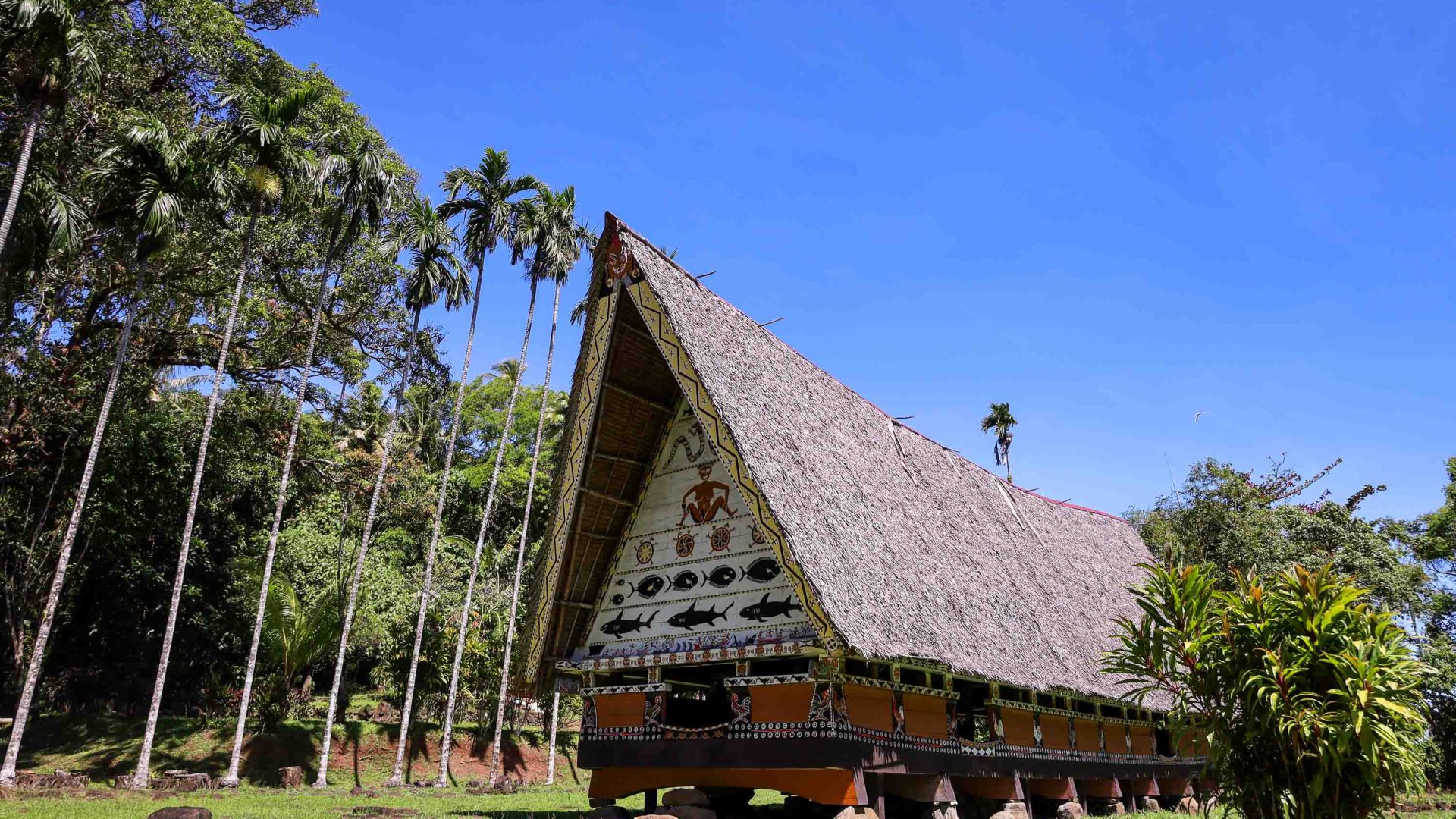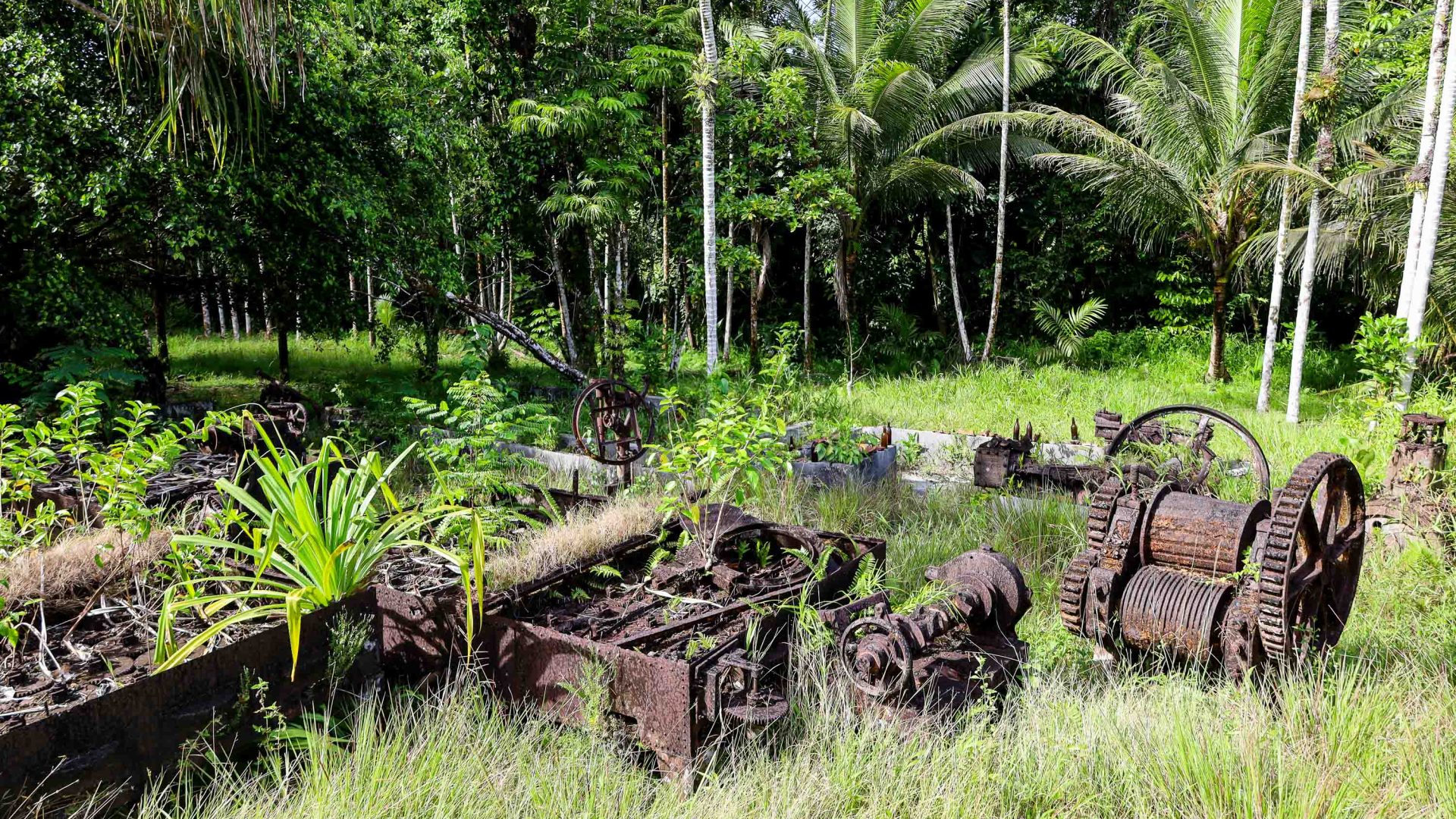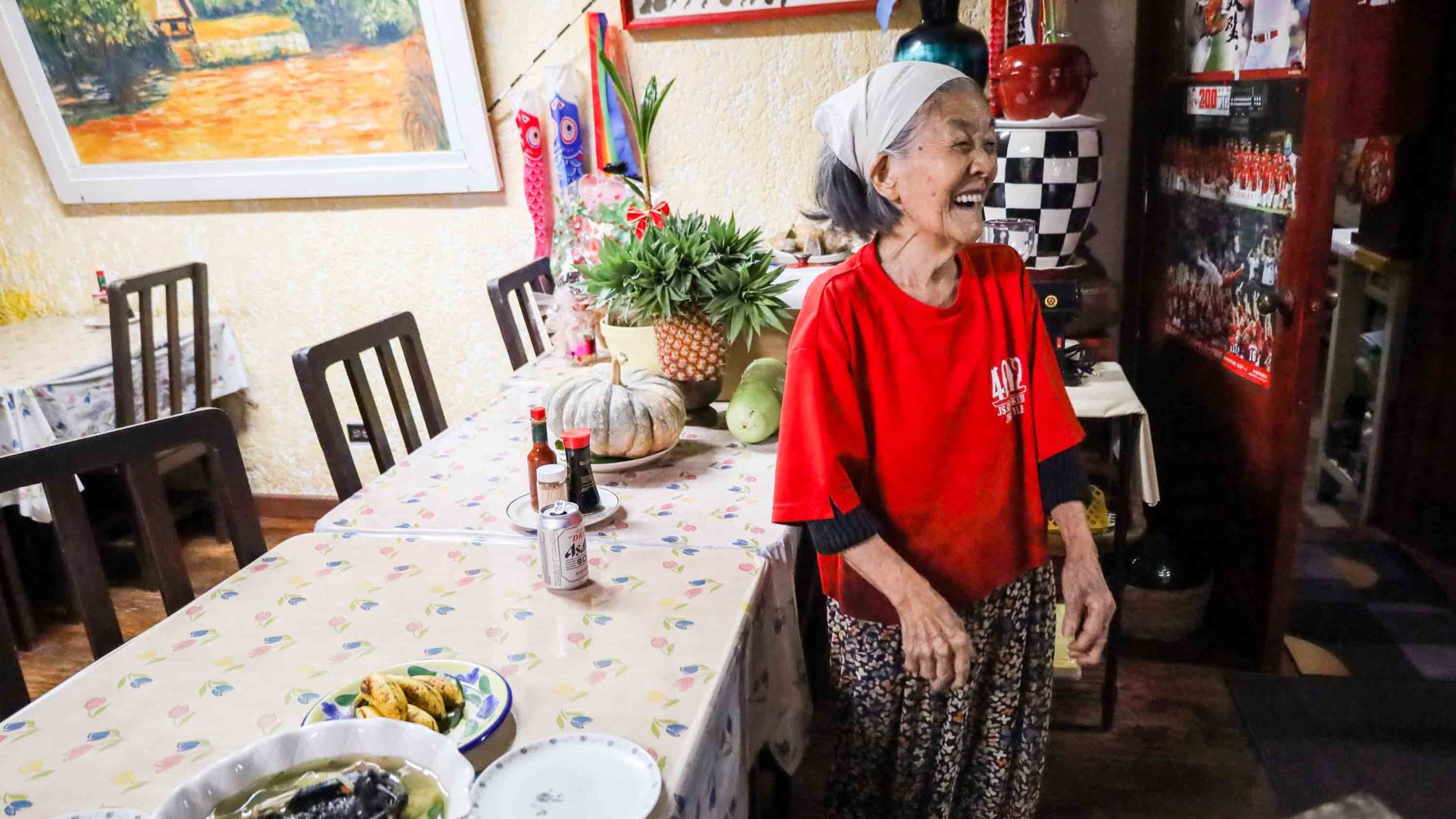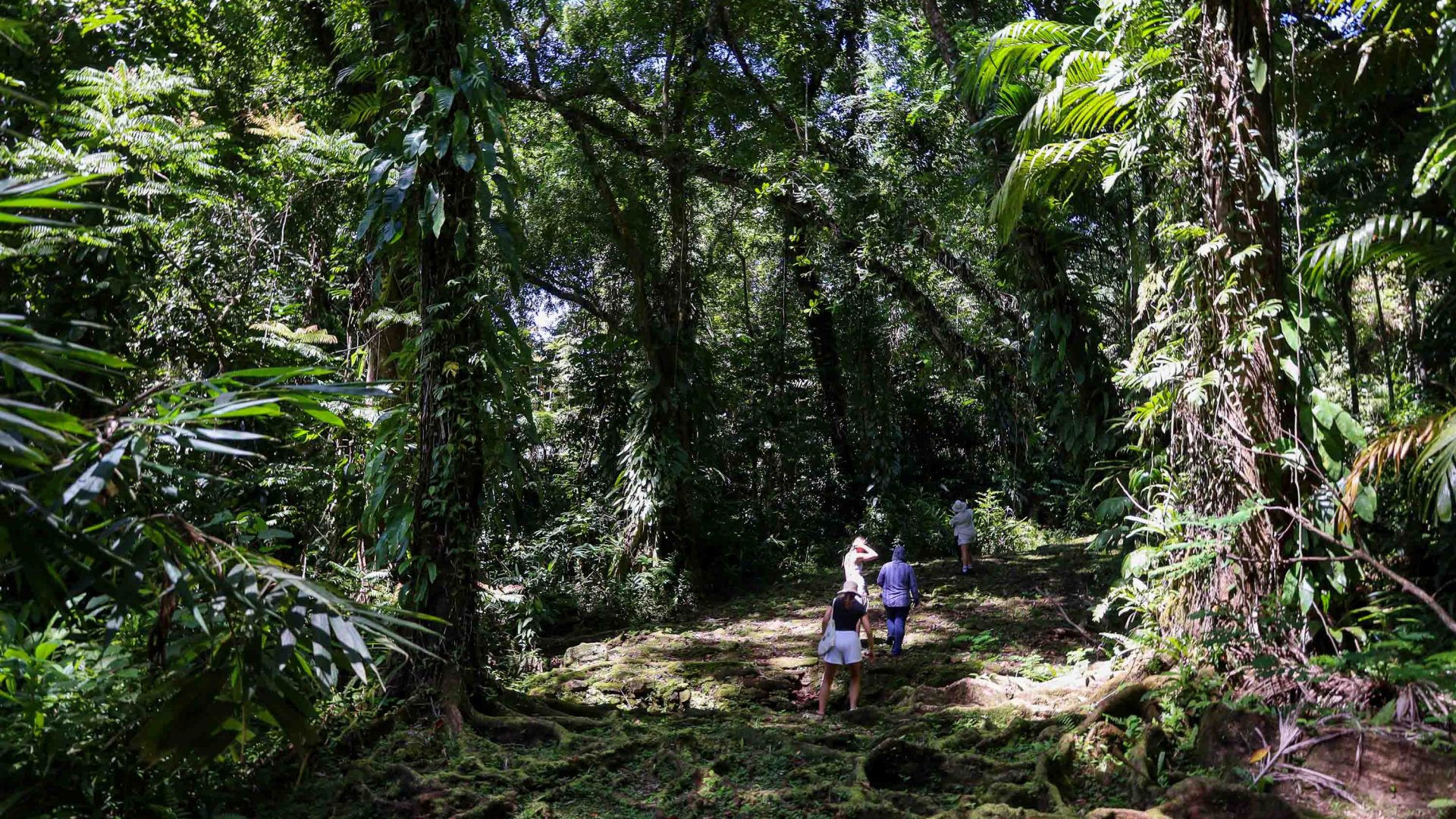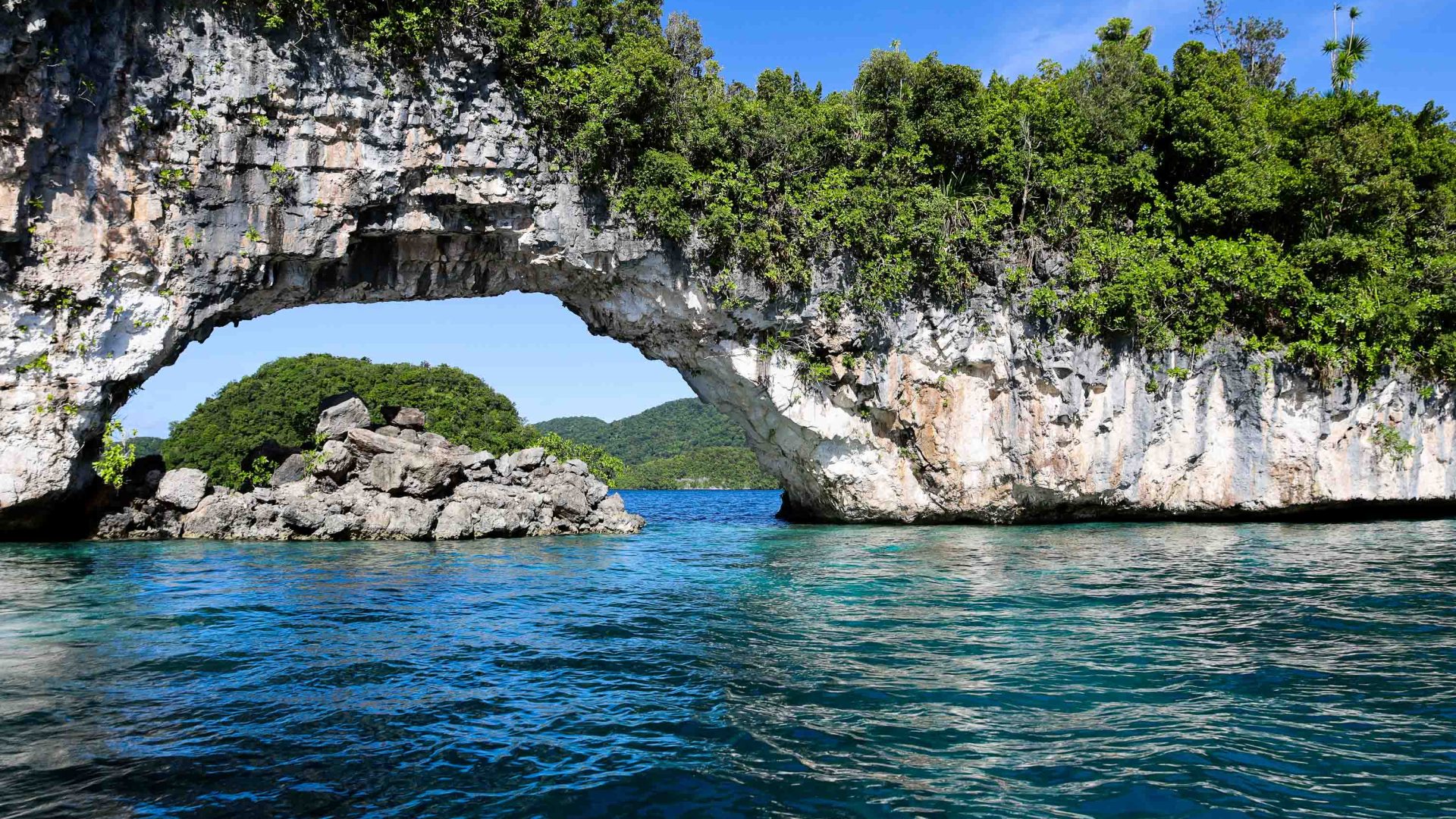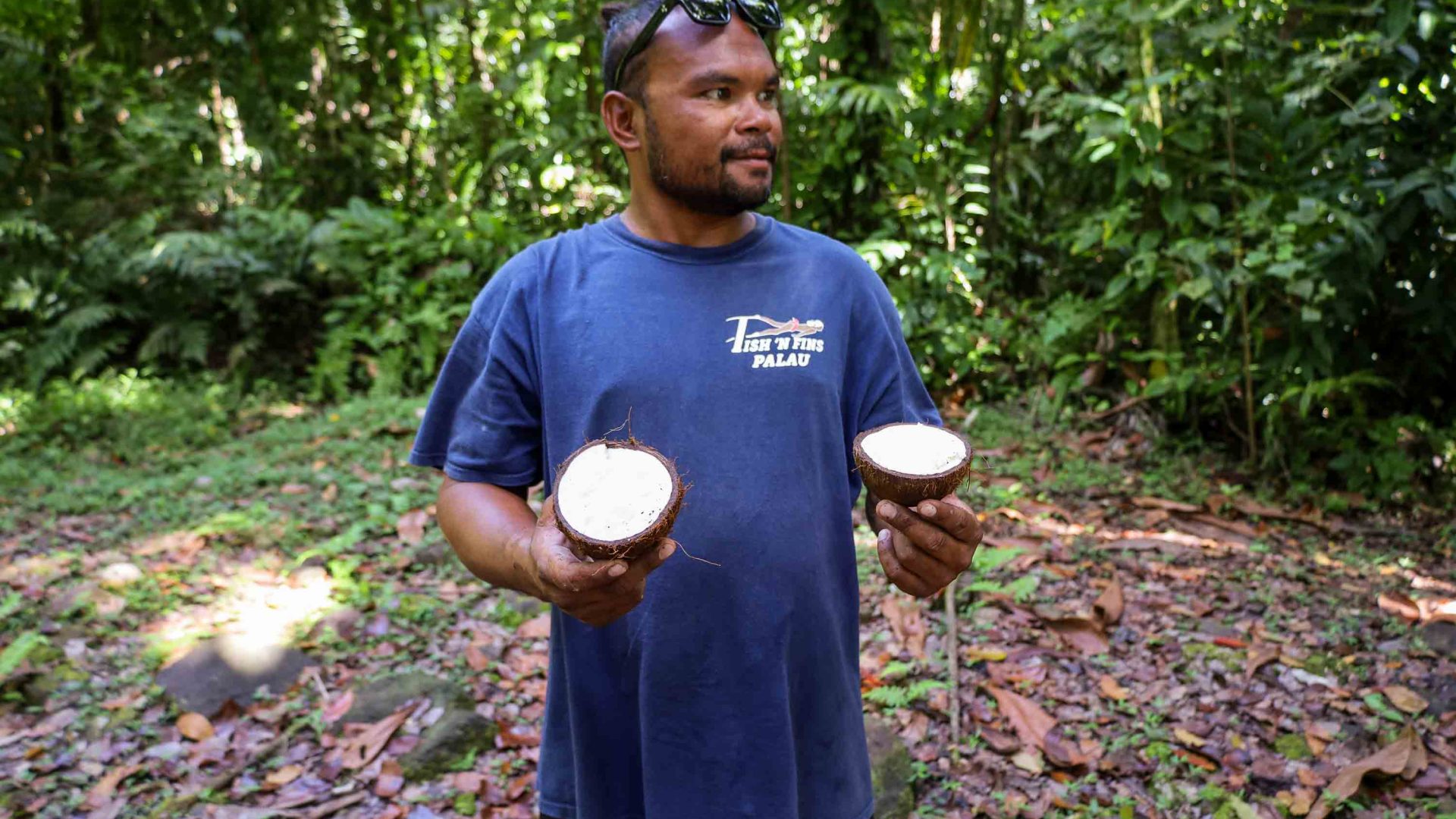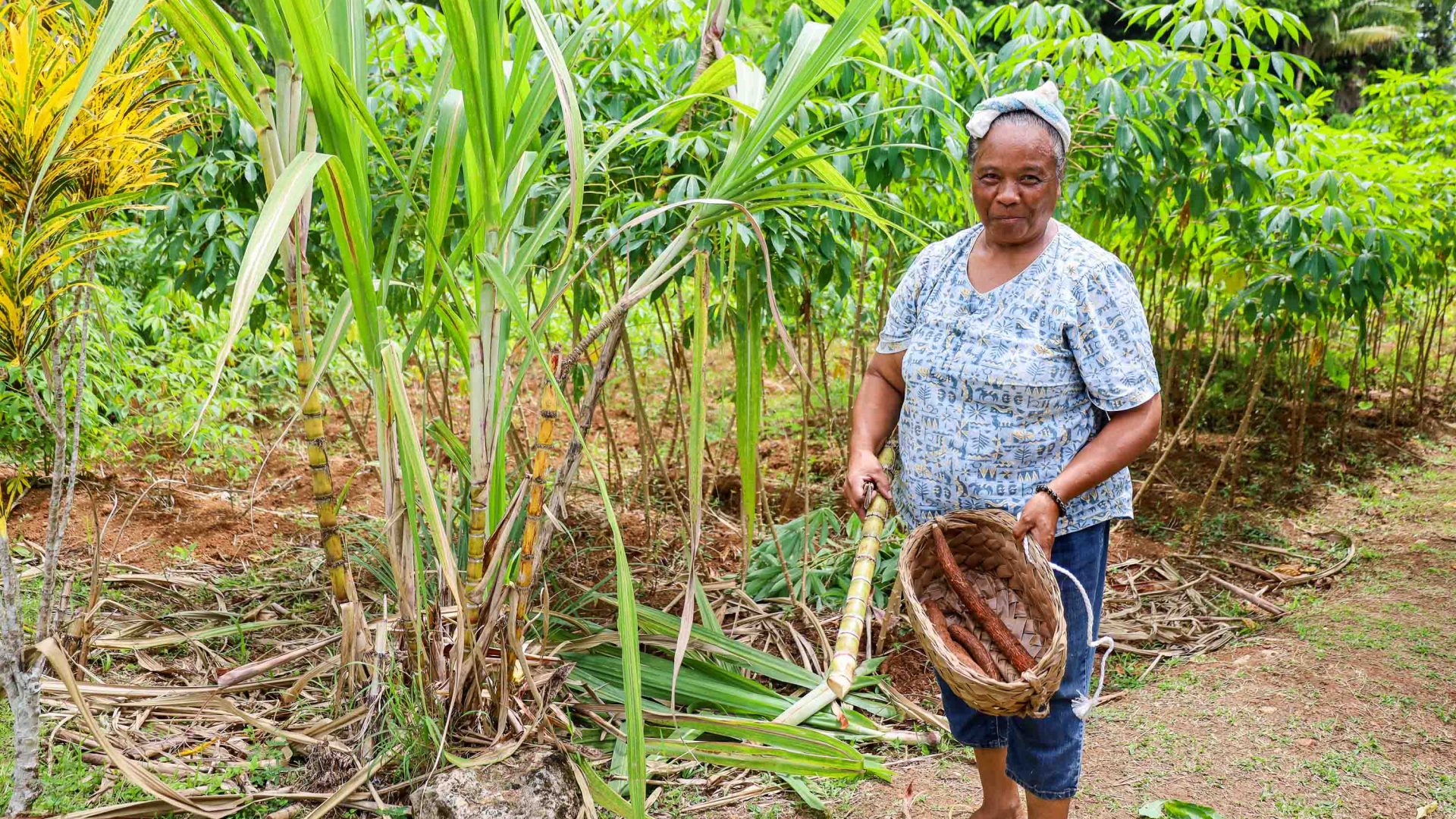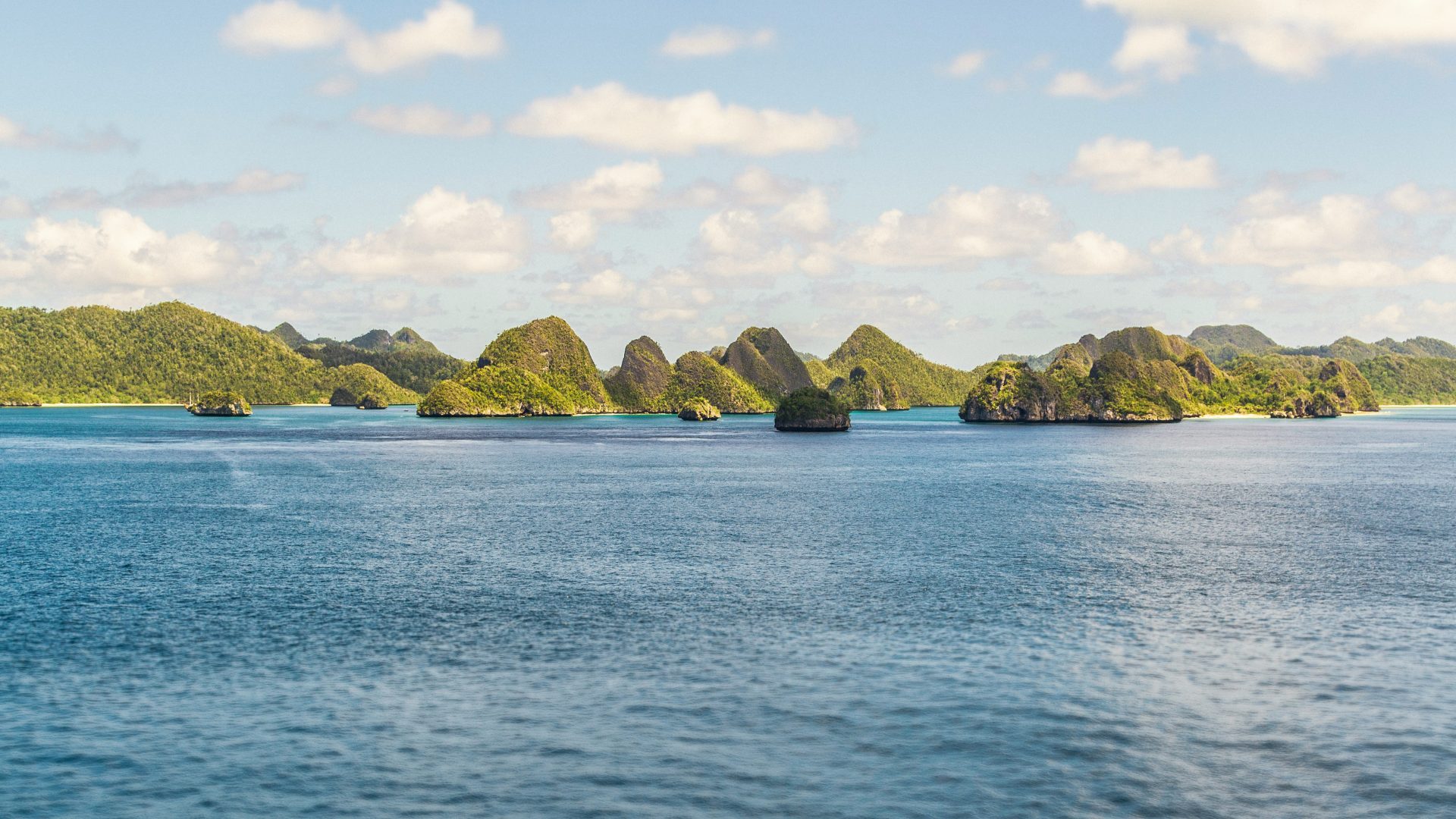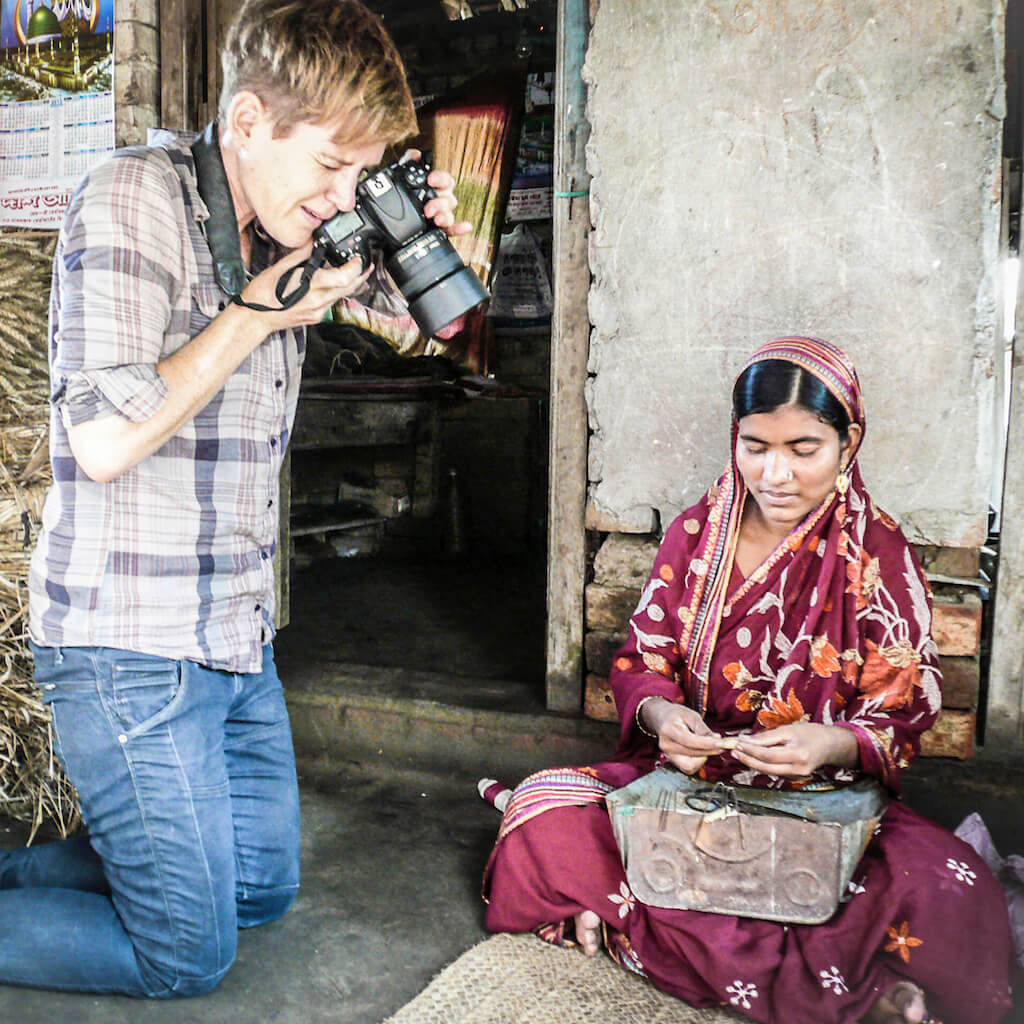Velma is donning a vibrant woven hibiscus bark skirt and traditional ‘money’ necklace—both custom attire for Palauan women. Her necklace features a jade-colored stone, once traded as currency exclusively by female clan members. The US dollar is used here today, but money necklaces are still passed between generations. It’s rare to see a Palauan woman without one.
I’m listening to Velma intently as we follow an ancient stone pathway. Sweat inches down my temple as the Pacific sun blazes through a tapestry of tropical palms, but I’m too enrapt by my surroundings to care.
It’s like a portal into another era. Estimates indicate Palau was first inhabited between 2,000 and 3,000 years ago, and as we walk farther, signs of modernity give way to traces of a layered past.
The stone pathway widens into a large circle, where three more paths connect. “The native people built this as a compass [to help navigate the land],” Velma tells us, “But the Germans turned [this place] into an outpost when they occupied the land in the early 1900s”.
Between 1885 and 1944, Palau was separately occupied by the Spanish, German and Japanese before being seized by US forces in World War II. It became a republic in 1994, but its multicultural history is woven into modern society.



